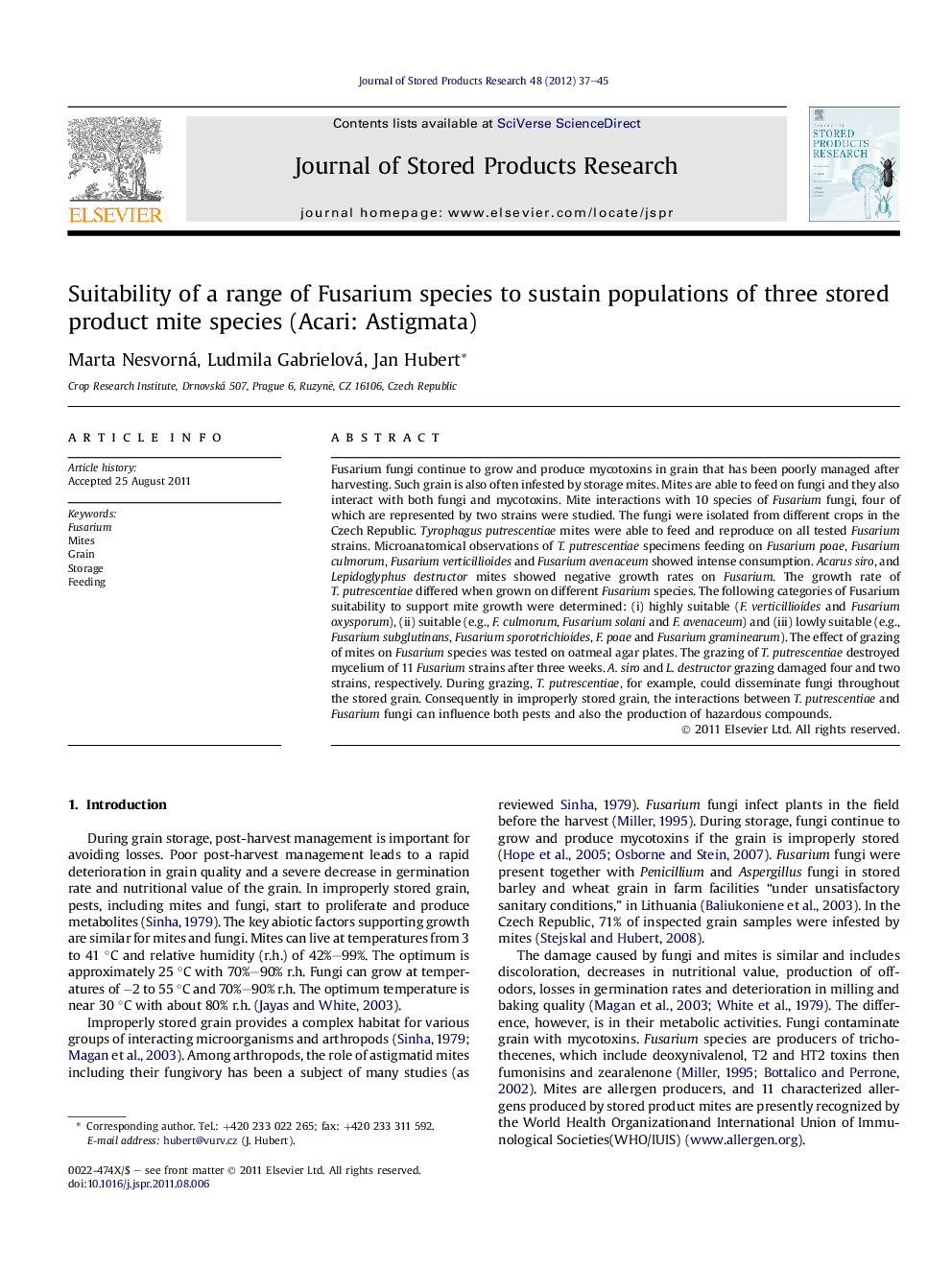| Article ID | Journal | Published Year | Pages | File Type |
|---|---|---|---|---|
| 4517272 | Journal of Stored Products Research | 2012 | 9 Pages |
Fusarium fungi continue to grow and produce mycotoxins in grain that has been poorly managed after harvesting. Such grain is also often infested by storage mites. Mites are able to feed on fungi and they also interact with both fungi and mycotoxins. Mite interactions with 10 species of Fusarium fungi, four of which are represented by two strains were studied. The fungi were isolated from different crops in the Czech Republic. Tyrophagus putrescentiae mites were able to feed and reproduce on all tested Fusarium strains. Microanatomical observations of T. putrescentiae specimens feeding on Fusarium poae, Fusarium culmorum, Fusarium verticillioides and Fusarium avenaceum showed intense consumption. Acarus siro, and Lepidoglyphus destructor mites showed negative growth rates on Fusarium. The growth rate of T. putrescentiae differed when grown on different Fusarium species. The following categories of Fusarium suitability to support mite growth were determined: (i) highly suitable (F. verticillioides and Fusarium oxysporum), (ii) suitable (e.g., F. culmorum, Fusarium solani and F. avenaceum) and (iii) lowly suitable (e.g., Fusarium subglutinans, Fusarium sporotrichioides, F. poae and Fusarium graminearum). The effect of grazing of mites on Fusarium species was tested on oatmeal agar plates. The grazing of T. putrescentiae destroyed mycelium of 11 Fusarium strains after three weeks. A. siro and L. destructor grazing damaged four and two strains, respectively. During grazing, T. putrescentiae, for example, could disseminate fungi throughout the stored grain. Consequently in improperly stored grain, the interactions between T. putrescentiae and Fusarium fungi can influence both pests and also the production of hazardous compounds.
Graphical abstractFigure optionsDownload full-size imageDownload as PowerPoint slideHighlights► Tyrophagus putrescentiae is able to reproduce on Fusarium strains of mycotoxins importance. ► The development of Acarus siro and Lepidoglyphus destructor on Fusarium strains was limited. ► Fusarium verticillioides and Fusarium oxysporum were highly suitable for T. putrescentiae development.
